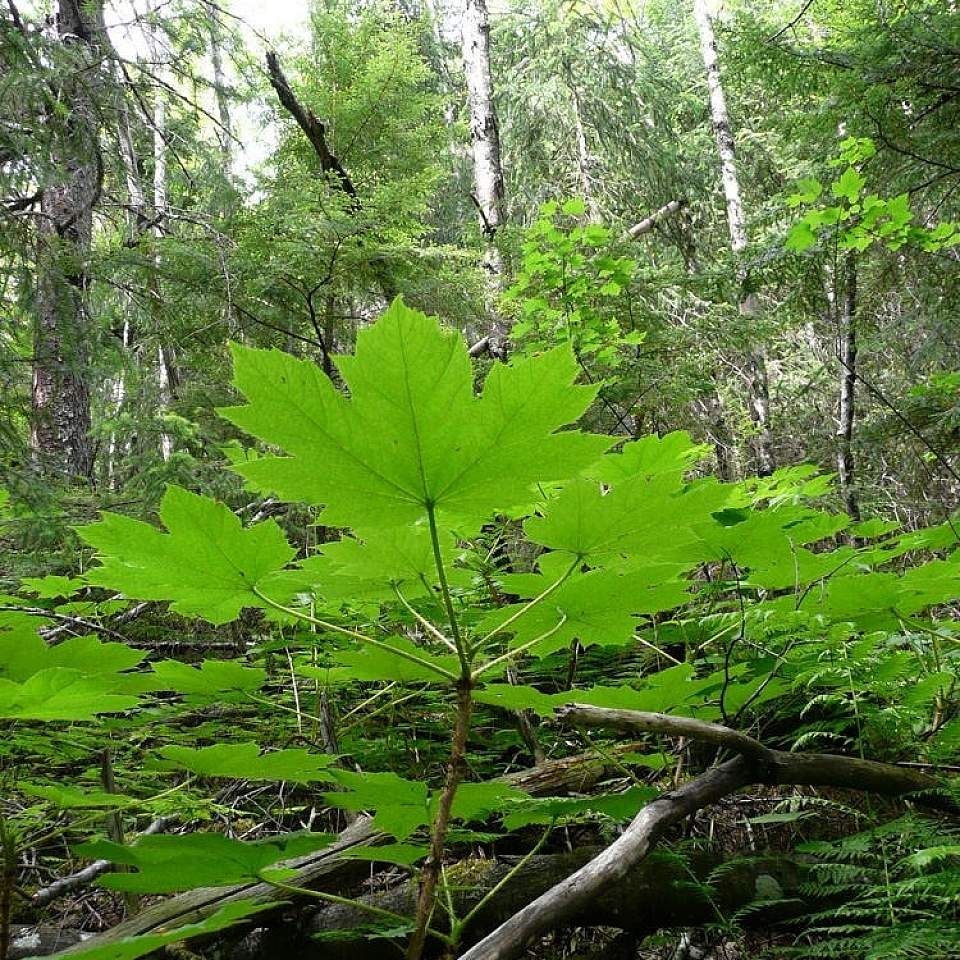
Ethically Wildcrafted Devils Club Tincture
Devil’s club is a large understory shrub native to the cool, moist forests of the Pacific Northwest (PNW) from Alaska to Oregon. The striking plant is typically identified by its towering stems and large palmate leaves which are covered in tiny spines. It is easy to see how devil’s club got its common name. Devil's club is acutely sensitive to human disturbance and reproduces intolerably slowly with individual plants taking several years to reach reproductive maturity.
Devil’s Club is an aromatic, pungent and warming remedy that has adaptogen, anti-diabetic, anti-inflammatory, expectorant, alterative, and antimicrobial properties.Devil’s Club is used in herbal medicine for the treatment of lung congestion, respiratory infections, cold-damp stagnation, poor circulation, stress, fatigue, depression, menstrual cramps, indigestion, constipation, arthritis, inflammation, type 2 diabetes, junk food cravings and binge eating.
Devil’s Club grows deep in the damp forest in the PNW and was a very important medicinal and spiritual herb to indigenous tribes in the region. This spiky plant, named cukilanarpak in one of the native Alaskan languages, translates to “big plant with needles,” and if you have ever had a spiky encounter with Devil’s Club you will know how true this is! Native tribes used this plant to for its protective properties, making jewelry or other talismans out of its uniquely hollow woody stem. It was used as a ritual herb by shamans during journey work. Native tribes used this amazing botanical for gastrointestinal complaints, tuberculosis, and to relieve painful inflammatory conditions, like arthritis.
Devil’s Club, distantly related to American ginseng, has a multitude of herbal applications - everything from potentially supportive of the cardiovascular system, pain relieving, antispasmodic, supportive of lung health during respiratory illness, blood sugar stabilizing, and as an adaptogen to help balance cortisol levels.
A member of the Araliaceae family, devil's club is a cousin to ginseng, eleuthero, and spikenard. Growing along lakes, creeks, and streams throughout the PNW, there are also scattered colonies of devil's club on the western shores and islands of Lake Superior. An imposing plant, Oplopanax horridus is noted for its spiny leaves and woody stems and can grow to heights of 3 to 10 feet tall. Devil’s club is rhizomatous and has dense umbels of small white flowers forming a pyramid shape which ripen into bright red, toxic berries.
Devil’s club has a long history of use by Native American tribes who consider the herb an important medicinal and spiritual plant. In traditional indigenous healing practices, the bark was employed for its many healthful qualities, including for minor stomach complaints, respiratory support, and minor musculoskeletal complaints. Folklorically, the spiny stems and root were used for protection and in cleansing practices. The root bark was sometimes worn as an amulet and the ash used to make a ceremonial face paint. Many modern herbalists today consider devil’s club root to be energetically warming, sweet, and bitter and continue to utilize it in the same manner as its historical uses. Traditionally the root bark was prepared as a decoction or extract.
Our devil’s club tincture is made with fresh, thoughtfully wildharvested root bark.
Contains: Fresh sustainably wild-harvested Devil’s Club (Oplopanax horridus) rhizome inner bark and true roots, gathered at peak potency and infused fresh into 75% cane alcohol (1:2).
PLEASE NOTE :
Do not use if pregnant.
Please consult your health care provider for questions and contraindications.
This product is not intended to diagnose, treat, cure, or prevent any disease.
*** This statement has not been evaluated by the Food and Drug Administration. This product is not intended to diagnose, treat, cure, or prevent any disease. ***
Choose options

